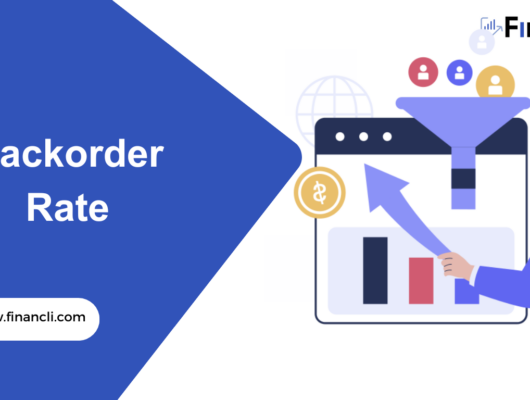Annual Contract Value (ACV)
Annual Contract Value (ACV) is a SaaS metric business use to measure the total value of a contract or subscription over a year. It is common in the software-as-a-service (SaaS) industry to determine the annualized revenue generated by a customer’s subscription or contract.
ACV is a valuable metric because it allows businesses to forecast future revenue and plan for growth. It can also help businesses determine the value of their customer base and make decisions about pricing and product offerings. Additionally, you can use it in conjunction with other metrics, such as customer acquisition cost (CAC) and customer lifetime value (CLV), to better understand a business’s financial health.
Annual Contract Value (ACV) Formula
The formula for calculating Annual Contract Value (ACV) is as follows:
ACV = (Total Contract Value) / (Contract Length in Years)
Where:
Total Contract Value is the total revenue a customer will pay over the contract period.
Contract Length in Years is the length of the contract in years.
For example, if a customer signs a three-year contract with a total value of $90,000, the ACV would be:
ACV = $90,000 / 3 years = $30,000 per year
This means that the customer will pay $30,000 per year on average for the length of the contract. Therefore, ACV is a helpful metric for businesses that offer subscriptions or contracts. The reason is that it provides a way to measure the recurring revenue from each customer annually.
Importance of ACV in the SaaS Industry
Annual Contract Value (ACV) is an essential metric in the Software-as-a-Service (SaaS) industry for several reasons:
- Revenue Forecasting: ACV helps SaaS businesses to forecast their revenue over a period of time. By understanding the average annual value of a customer, a SaaS company can predict future revenue and make informed decisions on product development, marketing, and sales strategies.
- Pricing Strategies: ACV helps SaaS companies to determine the optimal pricing strategies for their products or services. A SaaS company can identify the price points that will generate the most revenue and maximize profitability by analyzing the ACV of different customer segments.
- Customer Lifetime Value: ACV is an essential customer lifetime value (CLV) metric component. By understanding the ACV of each customer, a SaaS company can estimate the total revenue that a customer will generate over the course of their lifetime with the company.
- Growth Planning: ACV helps SaaS companies to plan for growth. By analyzing the ACV of their existing customer base, SaaS companies can identify opportunities for upselling and cross-selling to increase revenue from each customer.
Overall, ACV is a crucial metric for SaaS companies to track and analyze. It provides valuable insights into the business’s financial health and helps drive growth and profitability.
Annual Contract Value Examples

Here are a few examples of Annual Contract Value (ACV) for different scenarios:
- SaaS Subscription: A customer signs up for a SaaS product with a monthly fee of $100 and a 12-month contract. The ACV for this customer is $1,200 per year ($100 x 12 months).
- Consulting Services: A customer signs a 6-month consulting contract for a total fee of $50,000. The ACV for this customer is $100,000 per year ($50,000 / 0.5 years).
- Software License: A customer purchases a software license for $10,000 with a 2-year contract. The ACV for this customer is $5,000 per year ($10,000 / 2 years).
- Cloud Storage: A customer signs up for a monthly cloud storage plan that costs $200 with a 24-month contract. The ACV for this customer is $2,400 per year ($200 x 12 months).
In each of these scenarios, the ACV represents the average amount of revenue generated by the customer on an annual basis. Therefore, ACV is one of the essential metrics for Saas businesses to track. It helps forecast revenue, determine pricing strategies, and identify growth opportunities.
What is ACV in Sales?
In sales, ACV stands for Annual Contract Value, which refers to the total value of a contract or agreement with a customer over a year. This metric helps sales teams measure and forecast recurring revenue generated from each customer.

The ACV is typically calculated by taking the total value of a contract, including any recurring revenue or subscription fees. Then divide it by the number of years covered by the contract. This provides an average annual contract value, a valuable metric for sales teams to track over time.
Other than this, ACV is an important metric for sales teams in several ways, including:
- Revenue Forecasting: By understanding the average annual value of a customer, sales teams can forecast future revenue and make informed decisions on product development, marketing, and sales strategies.
- Customer Segmentation: Sales teams can use ACV to segment their customer base by the value of their contracts. This allows them to identify the highest-value customers and focus their sales efforts on those with the most significant revenue potential.
- Upselling and Cross-Selling: Sales teams can use ACV to identify opportunities for upselling and cross-selling additional products or services to existing customers. This increases the value of their contracts.
Overall, ACV is a critical metric for sales teams to track. Because tracking or not tracking this metric can mean the difference between success and failure.
What is a typical SaaS ACV?
A SaaS company has no typical Annual Contract Value (ACV). This is because the value of contracts can vary widely depending on the size and needs of the customer, the industry, and the specific software product or service being sold.

In general, however, the ACV for a SaaS company can range from a few thousand dollars to hundreds of thousands or even millions of dollars. Small and medium-sized businesses may have ACVs from $5,000 to $50,000 annually. On the other hand, large enterprises may have ACVs for hundreds or millions of dollars per year.
The ACV can also vary by industry. Some industries, such as healthcare or finance, typically have higher ACVs due to the complexity and specificity of their needs. Additionally, the ACV influences the pricing strategy of the SaaS company. For example, offering different service tiers with varying levels of functionality or support.
Ultimately, the ACV of a SaaS company is dependent on a variety of factors. And it can vary widely depending on the specific circumstances. As such, SaaS companies need to understand their customer base and tailor their pricing and service offerings to meet their needs.
How Useful is ACV as a Standalone Metric?
We have established in the earlier sections that ACV (Annual Contract Value) is a metric business use to represent the total value of contracted services or products over one year. So, ACV can be beneficial as a standalone metric in certain situations. But it is typically more meaningful when you use it in conjunction with other metrics.
Thus, ACV can be useful on its own. This holds true especially when looking at the revenue generated by a company’s contracted services or products. For example, it can provide an understanding of the size and scale of a company’s customer base and the average revenue generated per customer. This can be particularly important for businesses with a subscription-based model, as ACV measures the health and growth of the business.
However, on its own, ACV does not provide a complete picture of a company’s financial health. This is because it doesn’t consider expenses, churn rate, and customer acquisition costs. In addition, companies with different pricing models or sales cycles may have different ACV numbers. And this can make it difficult to compare them directly.
Looking at other metrics besides ACV is essential to better understand a company’s financial health. These might include Customer Lifetime Value (CLV), Churn Rate, Gross Margins, and Customer Acquisition Cost (CAC). By analyzing a combination of metrics, it is possible to gain a complete understanding of a company’s revenue, profitability, and overall financial health.
How to Leverage ACV To Make Better Decisions

To leverage Annual Contract Value (ACV) to make better decisions, it’s essential to understand what the metric measures. Also, what it can reveal about a business. Now you know that ACV measures the total value of contracted services or products over a one-year period. And you can use it to gauge the health and growth of a company’s customer base and subscription revenue. Here are some ways to use ACV to make better decisions:
- Evaluate Revenue Growth: You can use ACV to assess the growth of a company’s recurring revenue stream over time. Comparing ACV from year to year makes it possible to see whether the business is growing, stagnating, or declining. This information can help a business make informed decisions about resource allocation, hiring, and expansion.
- Identify Trends: You can also use ACV to identify trends in a business’s customer base. For example, suppose ACV is increasing, but the number of customers is either the same or decreasing. In that case, it may indicate that the company sells more products or services to existing customers. Alternatively, if ACV is decreasing, but the number of customers is increasing, it may indicate that the company is selling more low-priced products or services.
- Determine Customer Segments: ACV can be used to segment a company’s customer base and identify high-value customers. By grouping customers based on their ACV, it is possible to determine which segments of the customer base are the most profitable and where growth opportunities exist.
- Set Sales Targets: You can also consider ACV to set sales targets and quotas for sales representatives. Understanding the average ACV for a given product or service makes it possible to set realistic goals for individual sales representatives and measure their performance over time.
- Measure Marketing Effectiveness: Finally, ACV measures the effectiveness of marketing campaigns. Tracking ACV before and after a marketing campaign makes it possible to see whether it positively impacted revenue and was worth the investment.
In conclusion, leveraging ACV to make better decisions involves using the metric to assess revenue growth, identify trends, determine customer segments, set sales targets, and measure marketing effectiveness. By using ACV in conjunction with other metrics, businesses can gain a more comprehensive understanding of their financial health and make more informed decisions.






